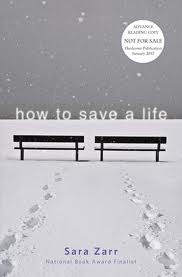Back in January, I talked a bit about why being critical matters. I’m still thinking about the things in that post and I’m always going to be an advocate for being critical and being classy.
As you know, we’re critical reviewers here. We like to look at books in depth and talk about the things that do and don’t work in a story. Something I’ve been asked often — and even more so after posting about the topic of being critical — is how I approach reading and reviewing a book. More specifically, what elements do I think about and how do I think about them then take those considerations and write a review.
This was sort of what inspired the original KidLitCon presentation last year, and when we build our presentation, one of the elements was a cheat sheet to review writing. In all honesty, I sort of forgot about it until the other night, and I thought it would be worth sharing. This was a collaborative effort, with help and insight from Abby, Janssen, and Julia. You’re welcome to borrow it, share it, and any insights you may have you’re welcome to add, as well. I hope it’s helpful not only in giving insight into what goes into a critical review, but I hope it’s helpful in shedding insight into critical reading and critical blogging, as well.
So there it is — I hope it’s helpful or insightful, and if there’s anything you consider in reading/writing critically, share away.











